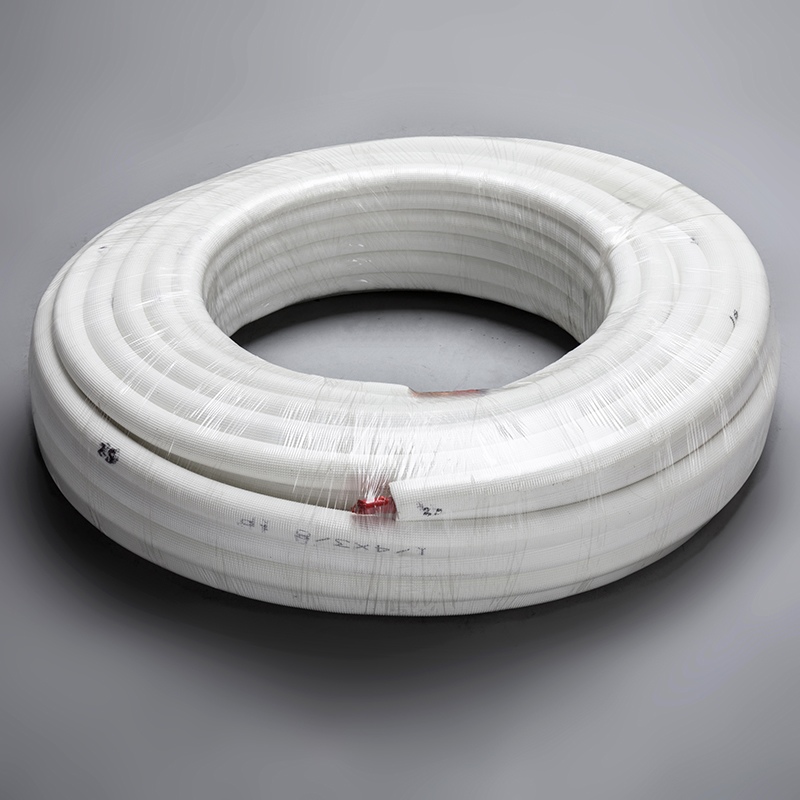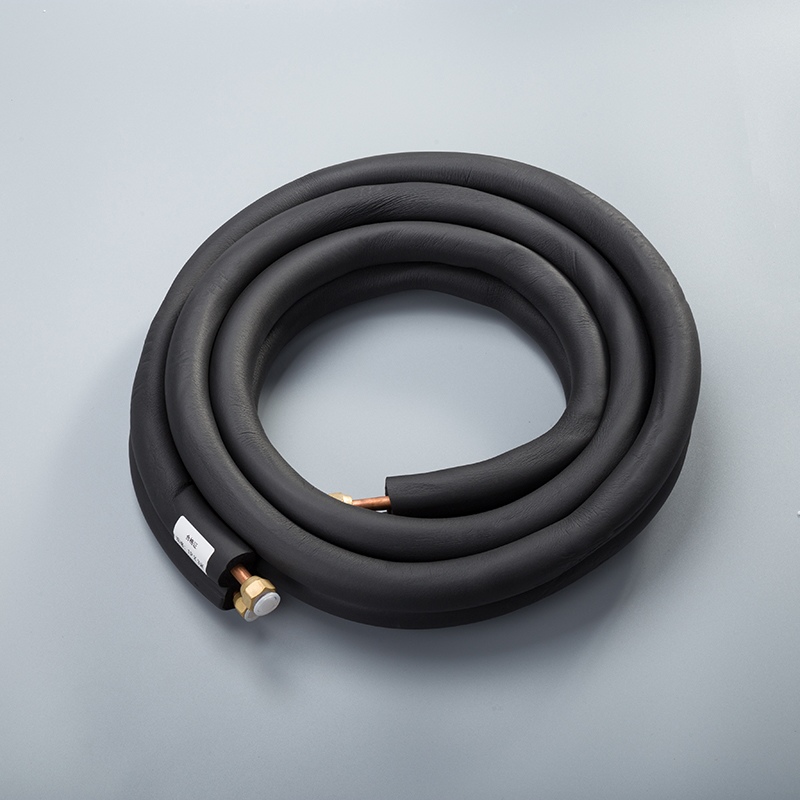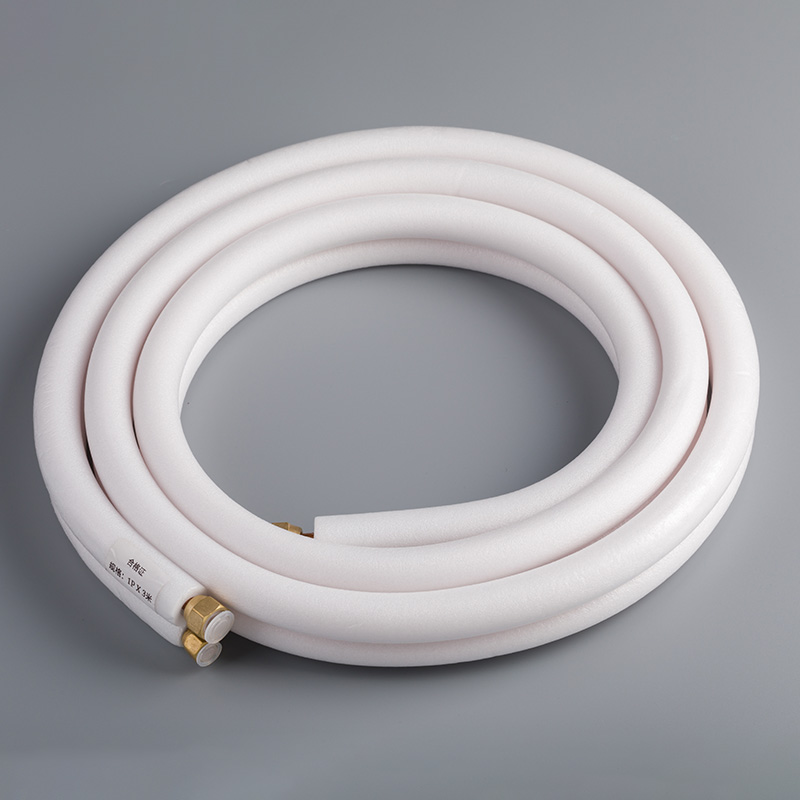HVAC Copper Pipe Guide for Easy Selection

When choosing pipes for HVAC systems, HVAC copper pipes are crucial. They help your system operate efficiently and extend its lifespan. Selecting the right HVAC copper pipe enhances performance. But how do you make the right choice? Consider factors like strength, size, price, and ease of installation.
Tests by the U.S. Department of Defense show that HVAC copper pipes in air conditioners can eliminate bacteria, mold, and mildew, which can negatively impact energy efficiency.
Energy-saving systems and eco-friendly buildings are now a major focus. Choosing the right HVAC copper pipe is more important than ever. Whether you are repairing or installing a system, the right HVAC copper pipe ensures it functions at its best.
Key Takeaways
Picking the right HVAC copper pipe is important for good performance and long life. Think about strength, size, and how easy it is to install.
Type K copper pipes are the strongest and work well for tough jobs. Type L is more flexible and great for homes. Type M costs less but doesn’t last as long.
Choosing the right pipe size is very important. Wrong sizes can raise energy costs and cause system problems. Always measure carefully and use sizing charts.
Copper pipes don’t rust and can last over 50 years if cared for. Regular check-ups stop leaks and keep them working well.
Spending more on good copper pipes at first can save money later on repairs and energy bills.
Types of Copper Pipes

Copper pipes for HVAC systems come in different types. Each type works best for certain uses. The three main types are Type K, Type L, and Type M.
Type K Copper Pipe
Type K copper pipe is the strongest and most durable. It has the thickest walls, making it great for tough jobs. This pipe is used in commercial systems and underground setups. It handles high pressure and lasts a long time.
Copper pipes are trusted for their strength and can last over 50 years if cared for properly.
Why choose Type K?
Durability: Thick walls make it very strong.
Applications: Best for commercial and heavy-duty HVAC systems.
If your project needs strength and long-lasting pipes, Type K is the best choice.
Type L Copper Pipe
Type L copper pipe is strong but more flexible than Type K. Its thinner walls make it easier to use for most HVAC and plumbing jobs. It’s common in homes and small commercial systems.
Feature | Type L Copper Pipe | CPVC |
|---|---|---|
Durability | Can be set in concrete | Less durable in some cases |
Corrosion Resistance | May corrode or leak | Fully resistant to corrosion |
Energy Efficiency | Less efficient than CPVC | Better insulation saves energy |
Noise Reduction | Can carry noise | Reduces water-flow noise |
Type L is a good choice for medium pressure and temperature changes. It’s also easier to install than Type K.
Type M Copper Pipe
Type M copper pipe is the cheapest and lightest option. It has the thinnest walls, so it’s less durable. It works well for home HVAC systems with low pressure.
Metric | Value |
|---|---|
Pressure Rating | Up to 500 psi |
Lifespan | 20-50 years |
Corrosion Resistance | High |
Compliance with Codes | IPC and UPC compliant |
Type M is great for saving money on simple projects. But it may wear out faster in tough conditions. For controlled environments, it’s a cost-effective choice that still performs well.
ACR Copper Pipe
ACR (Air Conditioning and Refrigeration) copper pipe is made for HVAC systems. It is special because it handles cooling and heating needs well. If you are working on an HVAC project, this pipe could be the best choice.
Here’s why ACR copper pipe is unique:
Compatibility: It works with many refrigerants, making it very reliable.
Corrosion Resistance: It lasts longer in tough environments without damage.
Formability: You can bend it easily, which makes setup simple.
Thermal Conductivity: It transfers heat well, saving energy and keeping temperatures steady.
Tip: ACR copper pipe is cleaned and sealed before use. This keeps your HVAC system running smoothly from the start.
Technically, ACR copper pipe can handle high pressure and sudden changes. Its pressure ratings follow the ASME B31 code, which checks material strength. Because of its corrosion resistance, no extra safety factor is needed in these ratings. Even so, its actual burst pressure is much higher, so it works well under tough conditions. Tests show ACR copper performs great in harsh environments, making it a strong choice for demanding HVAC systems.
Comparing Copper Pipe Types
Picking the right copper pipe for your HVAC system can be tricky. Each type has pros and cons, so knowing the differences helps. Here’s a simple breakdown:
Attribute | Type K Copper Pipe | Type L Copper Pipe | Type M Copper Pipe | ACR Copper Pipe |
|---|---|---|---|---|
Wall Thickness | Thickest | Medium | Thinnest | Medium |
Durability | Very strong | Strong | Less strong | Very strong |
Applications | Underground, commercial | Homes, small businesses | Low-pressure homes | HVAC and cooling systems |
Cost | Most expensive | Moderate | Cheapest | Moderate to high |
Special Features | Handles high pressure | Flexible | Budget-friendly | Cleaned, sealed |
ACR copper pipe stands out for HVAC and cooling systems. Unlike plumbing copper, it transfers heat better and works in wider temperature ranges. Here’s a quick comparison:
Attribute | Refrigeration Copper | Plumbing Copper |
|---|---|---|
Thermal Conductivity | Higher | Lower |
Temperature Range | -40°F to 400°F | 32°F to 180°F |
Material Purity | About 99.9% | 95% to 98% |
Application Focus | HVAC/R systems | Water supply |
Note: For extreme temperatures or better heat transfer, choose ACR copper pipe.
By learning these details, you can pick the best copper pipe for your HVAC system. Whether you need strength, savings, or performance, there’s a pipe that fits your project.
Sizing the Copper Pipe
Why Correct Pipe Sizing Matters
Choosing the right pipe size is very important for HVAC systems. If the pipe is too small, the system works harder. This raises energy bills and wears out parts faster. If the pipe is too big, it can cause problems like short cycling. Short cycling makes the system turn on and off too often, which reduces its lifespan.
Think of your HVAC system like a runner. A small pipe is like running uphill with a heavy bag—it’s hard work. A big pipe is like sprinting too fast—it tires out quickly. The right size pipe helps the system run smoothly, saving money and avoiding repairs.
Experts say wrong pipe sizes can cause system failures. For example, one homeowner fixed short cycling by replacing an oversized unit. This simple fix stopped frequent on-and-off cycles and improved performance. Whether installing or upgrading, picking the right pipe size is key for long-term success.
How to Calculate Pipe Size for HVAC Systems
Figuring out the right pipe size might seem hard, but it’s not. Professionals use certain steps to find the best size. Here’s a quick guide:
Variable | What It Means |
|---|---|
P | Friction loss per foot (psi) |
Q | Flow rate (gallons per minute) |
d | Inside diameter (inches) |
C | Constant value (150) |
Follow these steps:
Use the variables in the formula.
Check the results in a sizing chart.
Look at guides like the Copper Tube Handbook for help.
Another way is to convert heat load to flow rate. Use this formula:Flow Rate (L/s) = Heat Load (kW) / (Delta T (°C) * Specific Heat Capacity of Water (kJ))
You can also calculate based on speed or pressure drop:
Speed: Keep flow below 1 m/s.
Pressure Drop: Stay under 350 Pa/m to meet standards.
These methods help avoid mistakes and keep your system efficient. If unsure, ask an HVAC expert for advice.
Common Sizing Mistakes to Avoid
Wrong pipe sizing can cause big problems. Here are common mistakes and how to fix them:
Forgetting Pipe Length: Long pipes lose more pressure, lowering efficiency. Measure the full length, including bends and fittings.
Ignoring Pressure Drops: Small pipes with many fittings lose more pressure. For example, a 30-foot pipe with fittings can double pressure loss, costing $150–$300 more in energy each year.
Wrong System Match: Pipes that are too big or small cause issues. Big pipes lead to frequent cycling, while small ones struggle to cool properly.
To avoid these problems, measure carefully and match the pipe to your system. Good calculations and planning protect your HVAC system and save money. The right pipe size isn’t just about saving energy—it protects your investment.
Material and Durability
Thickness and Corrosion Resistance
The thickness of copper pipes makes them very strong. Thicker pipes handle pressure better and last longer. They are less likely to leak or crack over time. Copper also resists corrosion naturally, making it great for HVAC systems.
Why are copper pipes a good choice?
They can last over 50 years if installed well.
Copper doesn’t rust like other materials.
A protective layer forms on the surface over time.
Thick and corrosion-resistant pipes mean fewer repairs. This saves money and reduces maintenance work. If you want long-lasting pipes, copper is a smart pick.
Refrigerant Compatibility
Copper pipes work well with most HVAC refrigerants. This prevents damage and keeps the system running smoothly. Whether using old or eco-friendly refrigerants, copper handles them easily.
Copper also transfers heat very well. This helps HVAC systems keep steady temperatures. It uses less energy and works efficiently. For reliable performance, copper pipes are a great option.
Maintenance and Longevity
Copper pipes last a long time, often 20 to 100 years. Regular care can make them last even longer.
Here’s how different copper pipes compare:
Type of Copper Pipe | Lifespan | Features |
|---|---|---|
L-Type | Up to 50 years | Thick walls, good for high pressure and acidity |
M-Type | 20-50 years | Thin walls, may develop small leaks |
K-Type | At least 100 years | Thickest, used in commercial systems |
To keep pipes in good shape, check for leaks or discoloration. Clean them often to avoid buildup and ensure airflow. With proper care, your HVAC system will work well for many years.
Cost and Efficiency
Comparing Costs of Copper Pipe Types
Choosing the right copper pipe depends on cost and benefits. Each type has a different price and use. Here's a simple comparison:
Copper Pipe Type | Features | Uses | Cost Effect |
|---|---|---|---|
Type L | Strong, thicker walls | Commercial, industrial | Costs more but works well in tough conditions. |
Type M | Thin walls, affordable | Homes | Cheaper option, great for budget projects. |
Type K | Thickest walls, very durable | Underground systems | Most expensive but lasts long and handles high pressure. |
For home projects, Type M is a good, cheap choice. For heavy-duty or underground jobs, Type K is worth the higher price. Balancing cost and strength helps you get the best deal.
How Pipe Choice Affects Efficiency
The pipe you pick changes how well your HVAC works. Using the right pipe and insulation makes a big difference. Here's why:
Insulated pipes keep refrigerants cool and save energy.
Pipes without insulation waste energy and raise bills.
Good insulation helps your air conditioner last longer.
Modern HVAC systems with the right pipes can be over 90% efficient. Older systems are usually around 60%. This means modern systems save energy and need less fixing.
Feature | Older Systems | Newer Systems |
|---|---|---|
Efficiency | About 60% | Over 90% |
Energy Use | Uses more energy | Uses less energy |
Yearly Savings | Fewer savings | Saves more money |
Maintenance Needs | Needs more fixing | Needs less fixing |
Breakdowns | Happens often | Rarely happens |
Picking the right pipe and adding insulation improves performance and saves money over time.
Balancing Price and Quality
Finding the right mix of cost and quality is important. High-quality copper pipes cost more but last longer and work better. Cheaper pipes, like Type M, save money now but may not last in tough conditions.
Things to think about:
Small pipes use less refrigerant, making systems lighter and more efficient.
Thick pipes, like Type K, handle pressure better and last longer, saving on repairs.
Low-quality materials can rust, so buy from trusted brands.
Spending more on good pipes now can save money later. Whether you're upgrading or installing, balancing cost and quality gives you the best results.
Installation Considerations

Easy Installation and Bending
Copper pipes are strong but hard to bend. You need special tools, like pipe benders, to shape them without breaking. Unlike flexible pipes like PEX, copper takes more time and skill to install. This can make the job slower and cost more.
Here are some common issues:
Copper costs more than PEX, which is much cheaper.
Special tools are needed to cut and bend copper pipes.
Copper can rust or build up scale, causing leaks or low pressure.
Even with these problems, copper pipes are still popular because they last long. If you’re doing a project, use the right tools and take your time for better results.
Connecting Copper Pipes
Joining copper pipes tightly is important to stop leaks. Soldering is the most used method and can be simple if done right:
Clean the pipe’s outside and the fitting’s inside well.
Spread a thin layer of flux on both parts.
Push the pipe into the fitting until it fits snugly.
Heat the joint evenly using a propane torch.
Add solder to seal the joint completely.
Let it cool and wipe off extra flux.
Always wear safety goggles and keep a fire extinguisher nearby. If working near flammable items, use a flame shield for safety. Heating evenly and preparing properly make strong, leak-free connections.
Solving Installation Problems
Installing copper pipes can seem hard, but some tips can help. First, plan the layout to avoid too many bends and joints. This lowers the chance of leaks and improves efficiency. Second, check pipes for rust or damage before starting. Using good materials makes the job easier and avoids future problems.
If you’re new to copper work, practice on scrap pieces first. This helps you learn bending and soldering skills. Also, clean the pipes well before starting—this small step improves the final result. With patience and the right methods, you can handle challenges and get a professional-looking installation.
Picking the right HVAC copper pipe is very important. It helps your system work well and last longer. Things like pipe type, size, material, cost, and setup all matter. Each choice affects how your HVAC system performs over time.
Using the correct HVAC copper pipe keeps your system running smoothly. It also saves money by avoiding future problems. If you’re unsure, ask an expert or check the manufacturer’s advice. This helps you avoid mistakes and get the best outcome for your project.
Tip: Spend time choosing the right HVAC copper pipe now to avoid problems later.
FAQ
What type of copper pipe works best for home HVAC systems?
Type L copper pipe is great for home HVAC systems. It’s strong, bends easily, and handles medium pressure well. It’s also simpler to install than Type K. If you want good performance without spending too much, Type L is a smart pick.
How can I figure out the right copper pipe size?
Find the pipe size using flow rate, pressure drop, and pipe length. Charts and formulas like Flow Rate = Heat Load / (Delta T * Specific Heat Capacity) can help. If this seems tricky, ask an HVAC expert to make sure it’s correct.
Can Type M copper pipe be used for HVAC systems?
Yes, but only for systems with low pressure in safe conditions. Type M is thinner and less sturdy, so it’s not good for tough jobs. If you’re saving money and working on a simple system, it’s a good choice.
How can I stop copper pipes from corroding?
Copper doesn’t rust easily, but insulation helps it last longer. Insulation stops moisture buildup. Check pipes often for leaks or color changes. Clean them if needed to avoid damage over time.
Is installing copper pipes for HVAC systems difficult?
Copper pipes are strong but need special tools to cut and bend. Soldering takes practice, but careful preparation makes it easier. If you’re new, try soldering scrap pieces first or hire a pro for better results.
Tip: Clean pipes and fittings before soldering to avoid leaks.
See Also
The Definitive Guide to Buying Copper Pipe Coils
A Comprehensive Guide to Choosing Copper Pipe Coils
An Essential Guide for Purchasing Copper Pipe Coils


